DMC Trichology® offers the most advanced effective and the best hair transplant surgery in India. Founded by India’s leading hair transplant surgeon, Dr. Nandini Dadu, we provide innovative and effective treatments with a patient-first approach. Our clinic, located in Vasant Vihar (South Delhi) and Rajouri Garden (West Delhi), offers comprehensive analysis and solutions for various hair loss problems.
Many people are now aware of hair transplantation and its effectiveness in hair restoration. This surgical technique aids in restoring natural hair growth and helps manage baldness. It is an elective procedure sought after by anyone suffering from stage 2 or beyond the grade of hair loss (alopecia) and unhappy with their appearance.
Hair transplantation is a safe and painless procedure performed under local anaesthesia at DMC Trichology Clinic, one of the best hair transplant clinics in Delhi, India. This aesthetic operation involves the transfer of healthy hair follicles from the areas of the scalp with dense, healthy hair growth to areas with sparse hair growth. The sites from where the hair follicles are harvested are called the donor sites while the areas where the hair follicles are implanted are called the recipient sites. Usually, the donor sites are the back or sides of the head. But in case of severe baldness, the hair grafts can also be taken from other body parts like the beard and chest.
The following facts must be considered when checking on candidacy for hair transplantation:
To determine your candidacy for a hair transplant surgery in India, book a visit with the hair transplant surgeon Dr. Nandini Dadu at DMC Trichology Clinic.
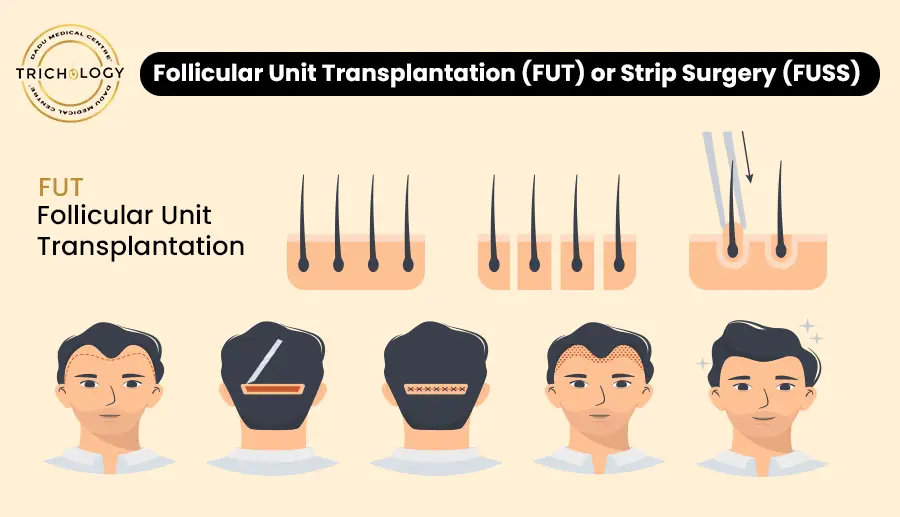
Follicular unit transplantation, also known as the strip method is a traditional approach to hair transplantation. In this method, a long, thin strip of hair-bearing skin is removed from the back of the scalp. Using stereo-microscopic dissection, individual follicular units are harvested from the strip and the harvested donor follicles are then implanted one by one into the micro holes created in the recipient areas of the scalp.
The primary goal of a FUT hair transplantation is to achieve maximum fullness from hair restoration. For candidates experiencing significant balding around the crown area of the head such as men with pattern baldness, FUT can be a better solution for better coverage and fullness.
The process of FUT hair transplantation is as follows:
Candidates can expect to start noticing the new hair growth at approximately 4 months after the treatment. The transplanted hair follicles continue to grow hair in the same way as the existing hair, as time passes, thus creating a fuller, thicker head of hair.
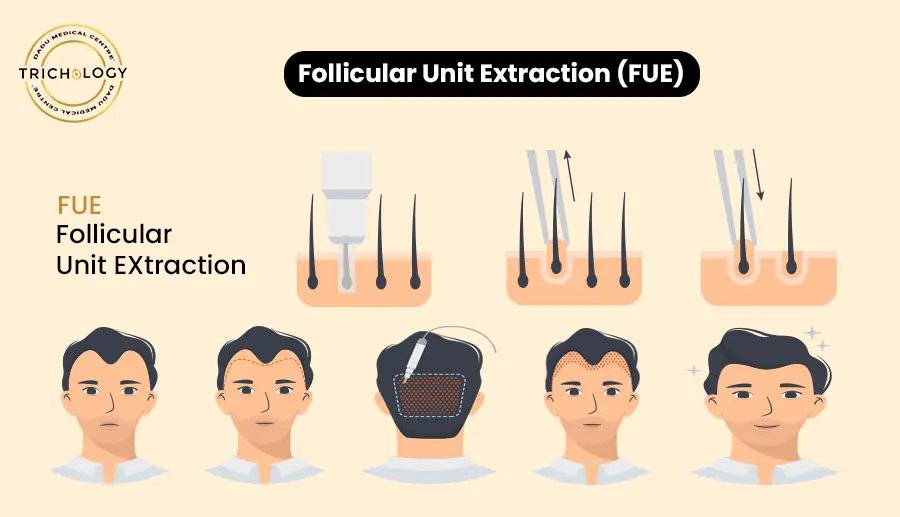
Follicular Unit Extraction is an advanced technique of hair transplantation that propels the field of hair transplant surgery one step closer to the minimally invasive procedure.
Hair grows in groups of two to four and each group is called the follicular unit. In the FUE procedure, the whole group of a follicular unit is extracted with an automated micro-punch tool.
In this type of hair transplantation, the healthy individual hair follicles from the donor areas of the scalp are plucked out using a micro-punch device and implanted one by one directly in the holes covering the thinning or bald area of the scalp. Apart from the back of the scalp, the beard area, chest, and back can also be utilised for the extraction of individual follicles, particularly if a larger graft is needed or the donor area on the back of the scalp is relatively weak
FUE hair transplants are most commonly performed on the scalp. They can also be done anywhere on the body where hair is thin or absent such as on the beard, arms, legs, and even on genital area.
The process of FUE hair transplantation is as follows:
Recovery from FUE is quick in contrast to FUT hair transplantation. The candidate may have swelling or discomfort for about 2-3 days after the treatment. The donor areas heal to leave behind not many noticeable micro-punch scars that are easily concealed with long hair.
Various other types of techniques of hair transplantation are also performed at DMC Trichology Clinic. The procedure is tailored based on one’s needs and requirements. To learn more about which technique is best for you and to learn more about the cost of the best hair transplant surgery in India, get a consultation with Dr. Nandini Dadu at DMC Trichology Clinic.
The DMC-Golden Touch Technique represents our exclusive in-house customised treatment, meticulously designed to deliver exceptional results. This innovative procedure combines FUE extraction with advanced implantation methods using a needle or implanter, including the cutting-edge Direct Hair Implantation (DHI) technique. Both FUE and DHI are considered the most advanced versions in the field of hair restoration. What sets the DMC-Golden Touch Technique apart is its unparalleled uniqueness and the emphasis on a painless surgical experience, completely devoid of stitches. This procedure not only ensures superior outcomes but also prioritises patient comfort, making it an exceptional choice for those seeking a modern and efficient solution for hair transplantation.
Benefits DMC Golden Touch®:
Pre-Treatment Care Instructions
Before the hair transplant session, the surgeon recommends doing the following:
Aftercare Instructions
Following hair transplantation, the candidate must follow these post-surgical instructions provided by the surgeon:
Hair transplantation is considered as one of the best options for managing baldness and restoring lost hair. This treatment involves using baldness-resistant hair follicles and grafting them into the bald areas of the scalp. This makes it an effective treatment for certain types of hair loss in both men and women.
India has numerous reputable hair transplant clinics that maintain top-notch international standards. These clinics offer affordable hair transplantation by highly skilled and experienced hair transplant surgeons using high-end technologies
Hair transplantation involves the transfer of healthy hair follicles from a donor site to a recipient area, with full hair growth taking months to a year. The recovery process in both the donor and recipient areas requires time. To expedite healing and revitalize cells, patients are often recommended GFC injections. These injections, abundant in natural growth factors that help stimulate healthy hair growth, ensuring long-lasting benefits and enhancing the overall success of the transplant.
It involves directly injecting Growth Factors, meticulously extracted from the patient's blood, into the scalp.
In addition, there's the revolutionary QR678, a proprietary hair fall control and regrowth therapy developed by a dedicated team of experts at DMC Trichology. This first-in-class treatment utilises cutting-edge breakthroughs in hair restoration. Named after the "Quick Response" QR code, QR678® Neo represents a swift and effective response to a once seemingly insoluble hair condition. Both GFC and QR678 signify advancements in the field, offering innovative solutions for individuals seeking effective and rapid responses to their hair concerns in the ever-evolving landscape of hair restoration.
DMC Trichology is one of the top clinics that provides leading hair transplant services in India. The clinic boasts a team of expert hair loss doctors, dermatologists, trichologists, and experienced hair transplant surgeons. Many patients have achieved their desired results with the amazing hair restoration treatments offered at the clinic. Additionally, various non-surgical treatments for managing hair loss are also available, including growth factors, mesotherapy, microneedling, and signature treatments like DMC Mesogrow, DMC Root Restore Therapy, DMC Advanced HGP, DMC Keravive, and DMC Hair Rituals.
Most patients can get at least 6,000 hair grafts, but there are also patients who require only 4,000 grafts or those who require 8,000. It usually depends on your hair and scalp health. You can consult at DMC Trichology for your hair transplant surgery in India to learn more.
The ideal age for a hair transplant varies. However, it is noted that individuals in their late 20s to 40s can get it. It is to get a hair transplant once hair loss has stabilized. Candidacy also depends on factors like overall health and hair loss patterns. To verify your candidacy and to get the best hair transplant surgery in India, consult DMC Trichology.
Sleep with your head elevated, using pillows to reduce swelling and avoid putting pressure on the treated area. Sleeping on your back is recommended to reduce friction on the graft. To ensure maximum healing, follow any specific advice recommended by your surgeon.
The number of sittings required for a hair transplant depends on the level of hair loss, desired results, and technique. Usually, one session is enough for simpler surgeries. However, patients with a severe range of balding or hair loss may require more sessions.
Identifying a genuine "number one" surgeon for a hair transplant surgery in India is difficult. Before making a selection, it is recommended that you conduct research and consult with the surgeon of your choice. Consult DMC Trichology, which is home to professional and experienced hair transplant surgeons.
Hair transplants in India have gained immense popularity. Owing to its competent doctors, excellent facilities, and affordable prices. Also, conducting extensive research and selecting a reputed facility is advised. To achieve a favourable outcome, it is important to choose expert surgeons like experts at DMC Trichology.
The size of a hair graft typically depends on the density and thickness of an individual’s hair and the technique used during the hair transplant procedure. On average, for hair transplant surgery in India, a single hair graft contains 1 to 4 hair, so 2,000 grafts would contain around 4,000 hair in total.
Yes, hair transplants are also performed on eyebrows, chest, beard, and other body areas. Contact DMC Trichology for the Hair Transplant Surgery in India.
The procedure is not painful because it's performed under anaesthesia. After surgery, swelling occurs, and this is managed using medication. This usually lasts for a few weeks; in the scalp or treated, it becomes normal after a few days.
Book your visit now!
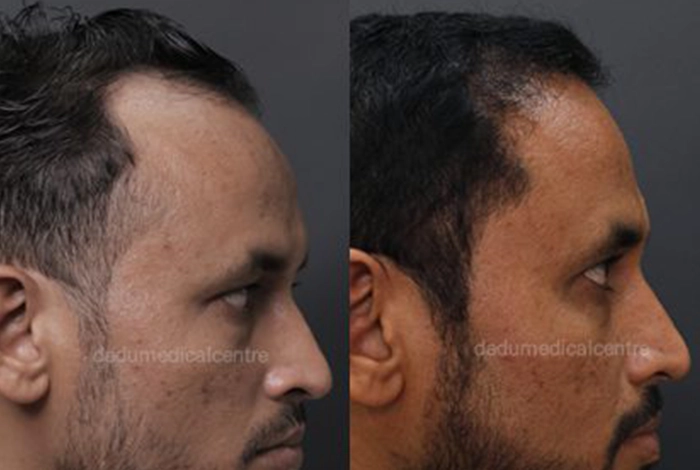
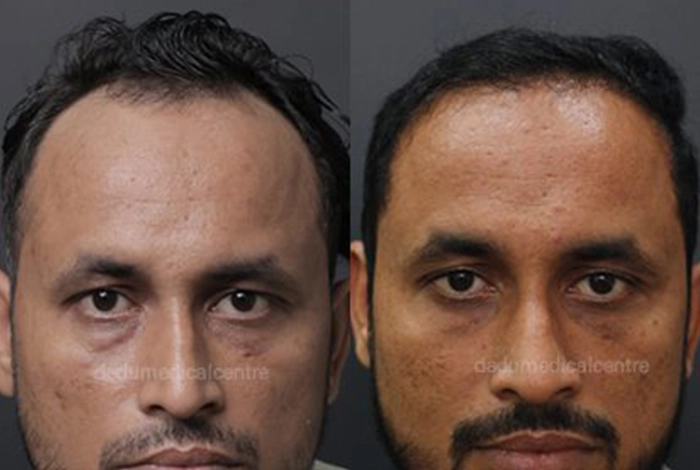
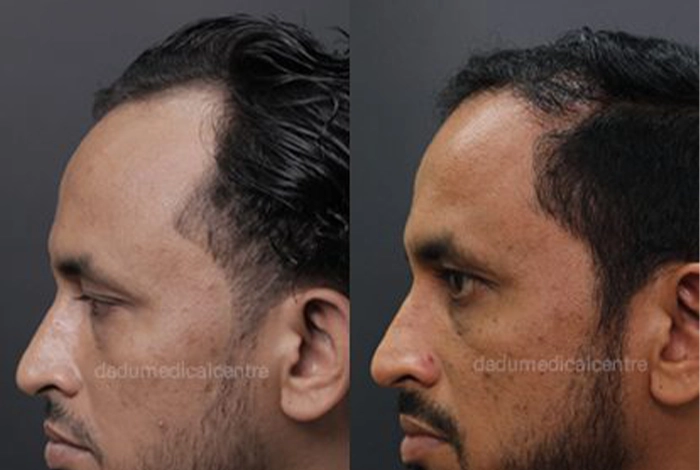
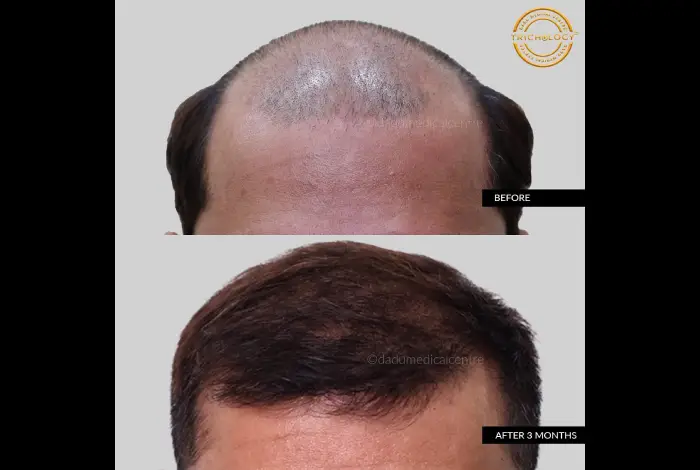
Monday to Saturday : 9:00 AM to 8:00 PM Sunday : 10:00 AM to 7:00 PM